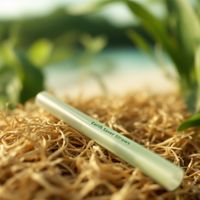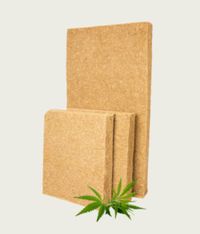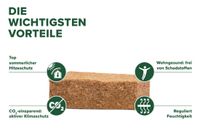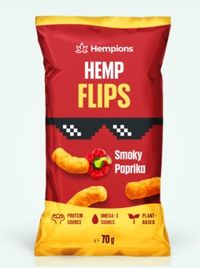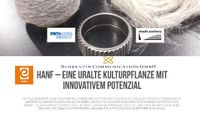Services
Knowledge transfer, Projects and Transformation
Take advantage of the opportunity and become a partner of the Hemp Innovation Hub
Hemp Products
Bioplastics
What is plant-based hybrid bioplastic? Biobased (or plant-based) refers to the renewable origin of a material, as opposed to fossil origin. Biobased and *biodegradable are two different concepts, with biodegradability characterizing the end of a material's life. Plant-based material comes from annually renewable sources such as corn, sugar cane or potatoes. .The straws are made from an innovative blend of 80% polypropylene and 20% starch-based biopolymer (TPS). This makes them not only stable in use but also biodegradable, offering an environmentally friendly alternative to conventional plastic straws.
Client Roots Europe
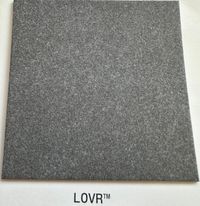
Hemp Textile - Leather
The Next Generation of Hemp 100% Bio-Based, 0% Plastic LOVR (short for leather-like, organic, versatile, and responsible) is the first plastic-free hemp leather of its kind – developed by the German start-up Revoltech. The material is made from residuals of the hemp harvest, such as hurds and fibers that are typically discarded in industrial processing. Through an innovative, entirely plant-based process, these by-products are transformed into a leather-like material – without any petroleum-based plastics or animal ingredients. Key Features of Hemp Leather: 100% bio-based & biodegradable Plastic-free, vegan & compostable Soft, leather-like feel Durable & moldable Made from by-products of the hemp industry Regionally produced in Germany Why Hemp Leather is a Gamechanger: it combines aesthetic design with true sustainability. It is more than just an alternative to leather – it’s a statement for the circular economy. Especially in fashion and lifestyle, but also in automotive and interior design, LOVR offers brands a clear path to position themselves in the world of sustainable materials. Fields of Application: Fashion & accessories (bags, shoes, belts) Furniture & interior (upholstery, wall coverings) Automotive (interior trim) Packaging design & branding
Hemp Insulation
Hemp Insulation – Natural, Efficient, an Hemp is a renewable raw material that has proven itself as an ideal solution for sustainable construction, thanks to its excellent insulation properties and environmental benefits. As an insulating material, hemp is processed into flexible mats or boards that can be used throughout the building – from the roof to interior walls. Key Advantages at a Glance: Excellent Thermal Insulation With its low thermal conductivity, hemp insulation ensures energy-efficient buildings – warm in winter, cool in summer. Effective Heat Protection Thanks to its high thermal storage capacity, hemp offers strong protection against overheating in summer. Outstanding Sound Insulation Its open fiber structure effectively reduces both airborne and impact noise, improving indoor acoustic comfort. Moisture-Regulating & Breathable Hemp absorbs moisture from the air and slowly releases it – preventing mold and creating a healthy indoor climate. Safe & Pleasant to Handle Hemp insulation is skin-friendly, low in dust, and can usually be installed without protective clothing. Eco-Friendly & Climate-Positive Hemp grows rapidly, requires no pesticides, and captures CO₂ during growth. At the end of its lifecycle, the material is recyclable or compostable. Typical Applications: Roof insulation between rafters External and internal wall insulation Ceilings and floors in timber construction Drywall cladding and installation layers Conclusion: Hemp insulation combines natural origin with technical performance. It’s the ideal choice for anyone seeking sustainability, healthy living, and resource efficiency – without compromising on insulation quality.
Hemp Foods
Nutrient-Rich, Versatile, & Sustainable Hemp foods are made from the seeds of the hemp plant (Cannabis sativa) – they contain no THC and are therefore non-intoxicating. Hemp seeds, hemp oil, hemp protein, and hemp flour are rich in: Omega-3 and Omega-6 fatty acids High-quality plant-based protein Fiber, vitamins, and minerals They are ideal for a conscious, vegan, or gluten-free diet and stand out for their sustainable cultivation: hemp grows quickly, requires little water, and no pesticides. Typical products: Hemp seeds, mueslis, protein bars, hemp drinks, baked goods, pasta, oil, and spreads. Key benefit: Hemp foods combine health, taste, and climate protection – making them a perfect fit for the bioeconomy and a green lifestyle.
Hemp Decarbonising
Beschreibung Hemp & Decarbonisation – The Future of Climate-Positive Innovation Industrial hemp (Cannabis sativa) is emerging as a high-impact crop for decarbonisation, offering climate benefits at multiple stages: from cultivation to product applications. Its ability to absorb CO₂, replace fossil-based materials, and support circular economies makes it a key player in the bioeconomy and climate strategies. 1. CO₂ Absorption During Cultivation Hemp is one of the most efficient carbon-sequestering plants: 1 hectare of hemp can absorb up to 10–15 tons of CO₂ per year – more than many tree species. It grows rapidly (100–120 days), requires no pesticides, and uses less water than most crops. 2. Hemp as a Renewable Material to Replace Fossil Inputs Hemp-based products help reduce industrial emissions by substituting petrochemical materials in: Construction (e.g., hempcrete, insulation panels) → long-term carbon storage Textiles & composites → increasingly used in automotive and fashion industries Bioplastics and sustainable packaging Paper and pulp → alternative to deforestation-based production 3. Carbon-Negative Materials & Circular Economy Many hemp products are biodegradable, compostable, or recyclable With the right processing, hemp can produce carbon-negative materials, such as: Hempcrete → absorbs more CO₂ during its life than is emitted during production Hemp in Climate and ESG Strategies Relevant sectors: Green Building & Architecture: Hempcrete walls can lock in 12–20 kg CO₂ per m² Regenerative Agriculture: Crop rotation benefits + CO₂ drawdown Sustainable Industry: Hemp helps decarbonise supply chains Policy & Funding Fit: Hemp aligns with the EU Green Deal, ESG frameworks, and climate funding programs
What Hemp Market is interesting to you ?
Hemp in Construction Medical Cannabis & B2B Events Hemp in Packaging & Textile Recreational Cannabis Market CBD
© 2024 Behrentin Communication GmbH

